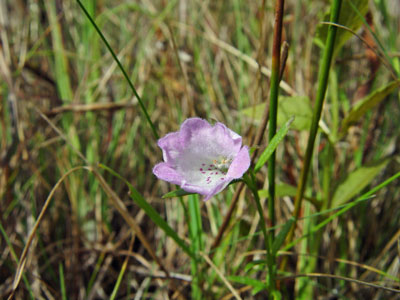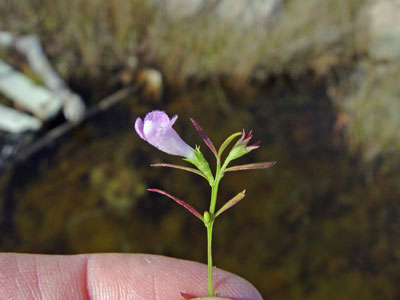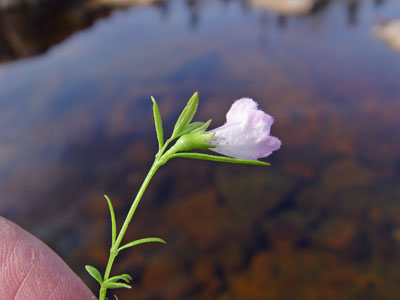DACF Home → Bureaus & Programs → Maine Natural Areas Program → Communities, Plants, and Animals → Rare Plants → Agalinis neoscotica
Agalinis neoscotica (Greene) Fern.

Nova Scotia False-foxglove
- State Rank: S1
- Global Rank: G3
- State Status: Threatened
Habitat: Damp sand, peat or sphagnous pockets near the shore, above the usual tidal zone. [Rocky coastal (non-forested, upland)]
Range: Sable Island and western Nova Scotia.
Aids to Identification: This small annual has a smooth square stem and rarely grows higher than 30 cm. The soft leaves are narrow (1-4.5 mm wide) and arranged oppositely along the stem. The pink flowers are broadly funnel-shaped, and they grow from the leaf axils. The relatively long calyx lobes, small auther sacs, and short style distinguishes this species from others in the genus.

Ecological characteristics: Growing in Maine along shores or edges of tidal pools.
Phenology: Flowers mid-July - early October.
Family: Orobanchaceae
Synonyms: Agalinis paupercula (L.) Pennell var. parviflora; Agalinis purpurea (L.) Pennell var. neoscotica (Greene) Boivin.; Gerardia neoscotica Greene; Gerardia purpurea L. var. neoscotica (Greene) Gleason.
Known Distribution in Maine: This rare plant has been documented from a total of 3 town(s) in the following county(ies): Washington.

Reason(s) for rarity: Disjunct from principal range; range naturally restricted.
Conservation considerations: Appears to be persisting in the few places where it occurs.